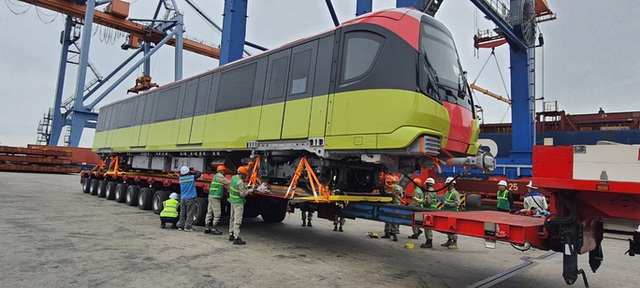Underground space master plan in urban districts approved
VGP - The Ha Noi People's Committee has approved the general planning of urban underground space until 2030, with a vision to 2050 with total area of 756 km2.

A cabin of the first train of the Nhon - Ha Noi Station Metro Railway route with 4 kilometer underground section - Illustration photo
The general underground planning covers the administrative boundaries of 20 districts: Hoan Kiem, Ba Dinh, Dong Da, Hai Ba Trung, Cau Giay, Tay Ho, Thanh Xuan, Hoang Mai, Ha Dong, Nam Tu Liem, Bac Tu Liem, Long Bien, Me Linh, Dong Anh, Gia Lam, Dan Phuong, Hoai Duc, Thanh Oai, Thanh Tri, and Thuong Tin.
It also governs the underground space development in five satellite urban areas in Ha Noi's outer districts of Soc Son, Son Tay, Hoa Lac, Xuan Mai, Phu Xuyen.
The city's major public transport hubs (urban railway station, national railway station) will be the nucleus of the underground public space.
In satellite urban areas of Soc Son, Son Tay, Hoa Lac, Xuan Mai and Phu Xuyen, underground public space will be built below the stations of urban railway lines linking with Ha Noi downtown.
The underground space will include a public car park, technical infrastructure system, public works system, and tunnels connecting underground spaces.
Construction of underground works will not be carried out in Ha Noi's Old Quarter, even banned in areas classified as national monuments, including Thang Long Imperial Citadel, President Ho Chi Minh's relic site at the Presidential Palace, Temple of Literature, Co Loa ancient citadel, Temple of Hai Ba Trung, Hoan Kiem Lake and Ngoc Son Temple.
Underground public works must also avoid zone of defense and security.
The construction of underground technical infrastructure needs the approval and supervision of the Ministry of National Defence and the Ministry of Public Security.
The master plan on underground space in the central urban area to 2030, with a vision to 2050, was approved to meet the requirements of state management of construction, management and use of underground works in the central urban area, and synchronously connect underground spaces in the city./.

